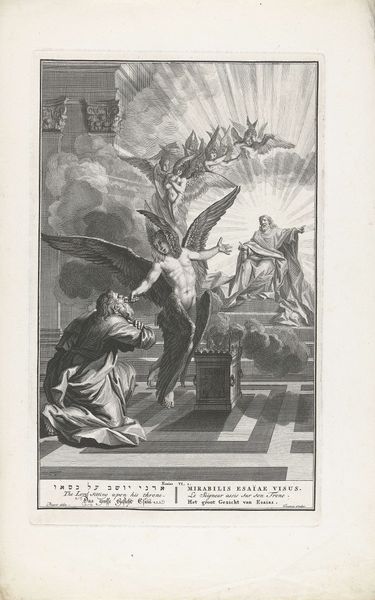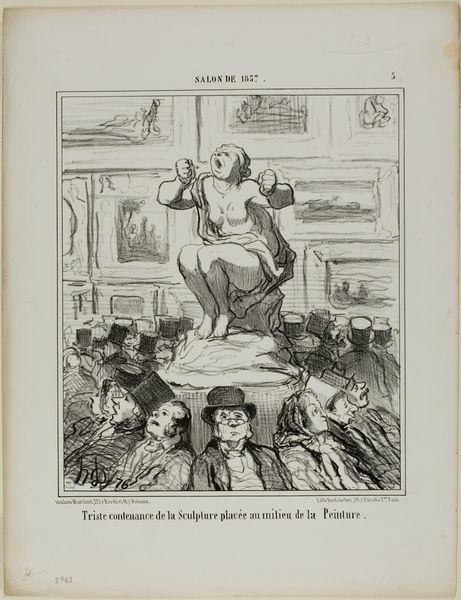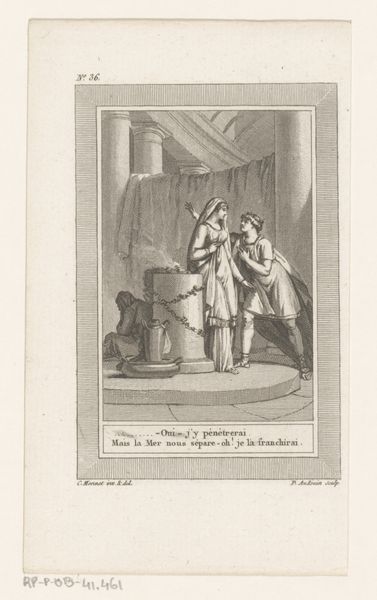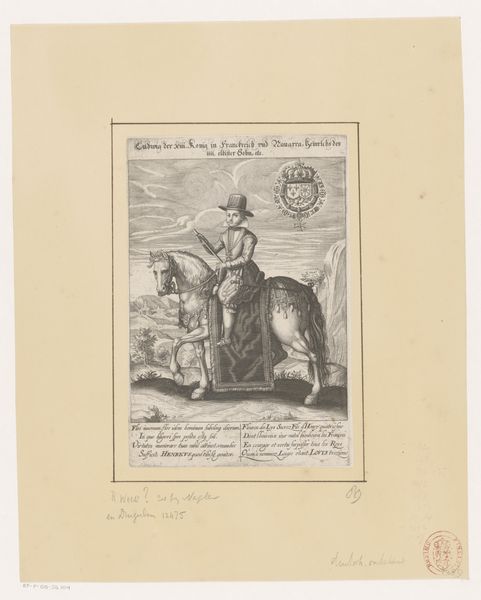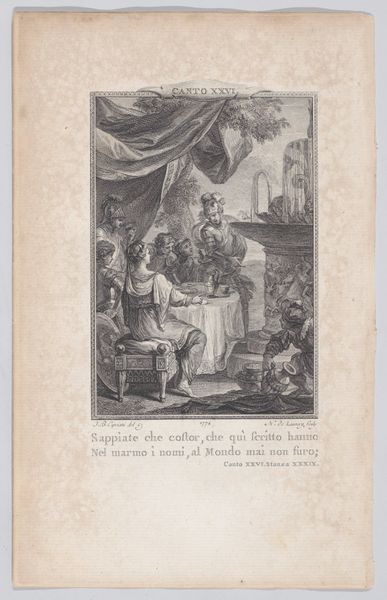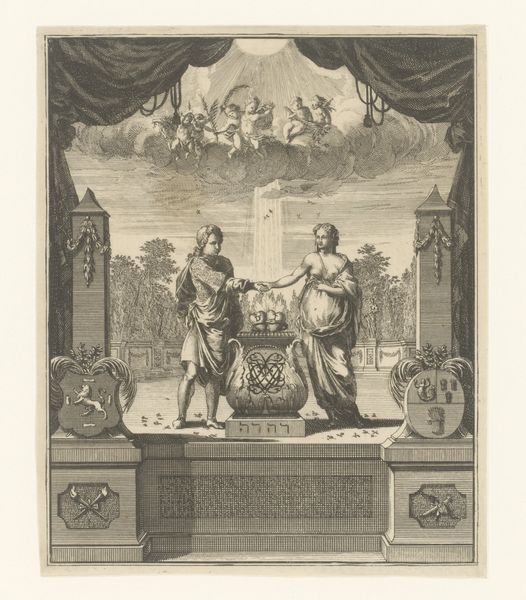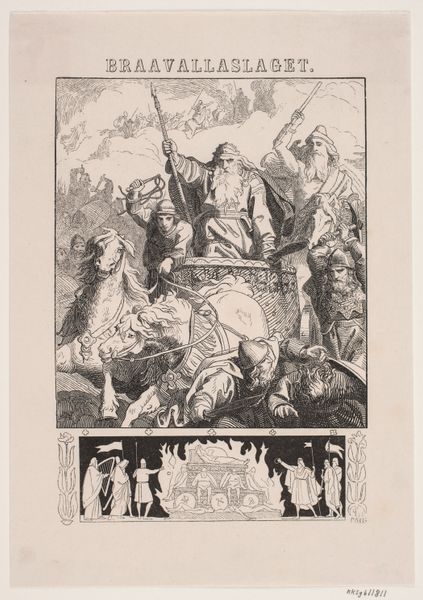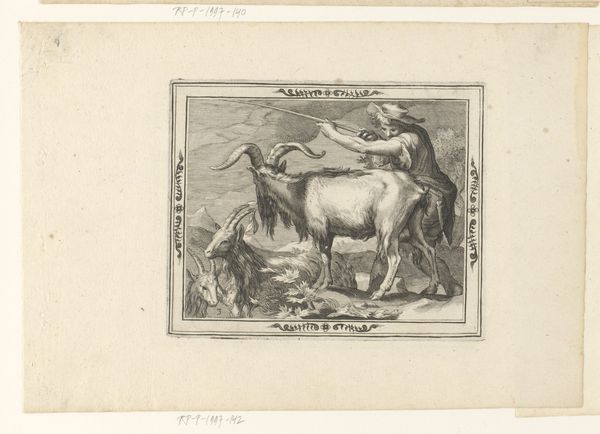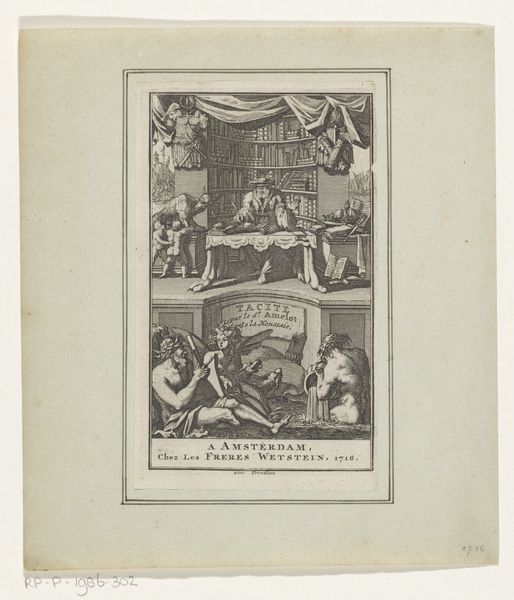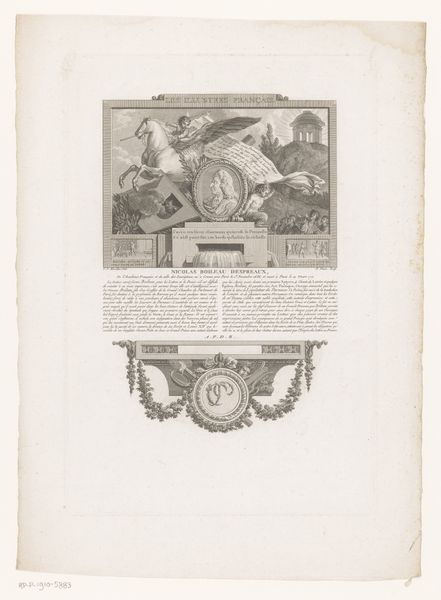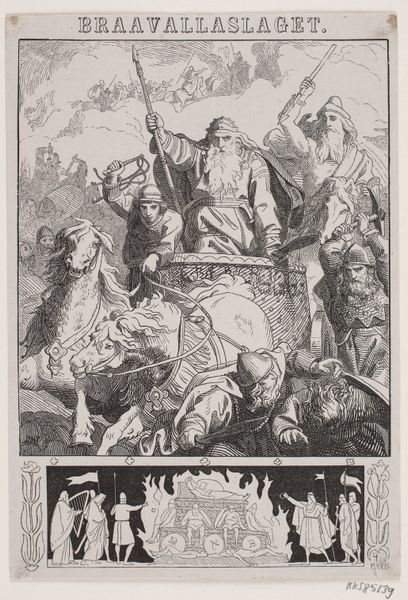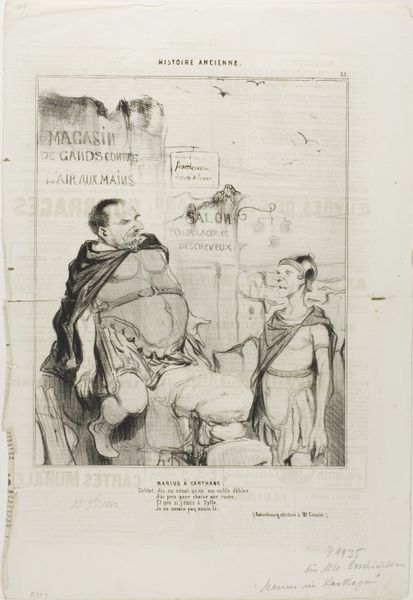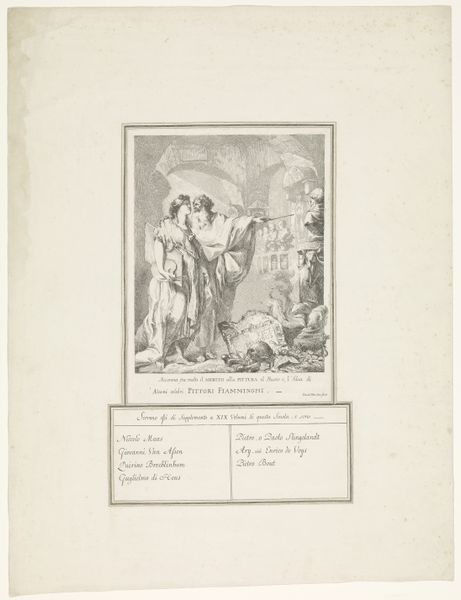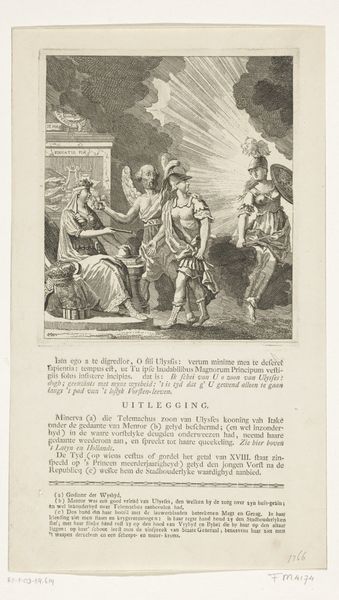
print, engraving
#
narrative-art
# print
#
folk-art
#
genre-painting
#
engraving
Dimensions: height 394 mm, width 324 mm
Copyright: Rijks Museum: Open Domain
Dirk van Lubeek created this print, "Kort verhael van den Verloren Zoon," around the turn of the 19th century in the Netherlands. The image depicts a scene from the biblical parable of the Prodigal Son. It's a story of repentance and forgiveness, fitting within a broader Dutch cultural context deeply influenced by Protestantism and its emphasis on personal morality. Note how Lubeek uses visual codes to convey meaning. The son's disheveled appearance and kneeling posture signify his contrition. The pigs, symbols of impurity, underscore his degradation. Elements like the medal and farm equipment situated above the son suggest the affluence he has lost. Prints such as this served a vital public role at the time, disseminating moral and religious teachings to a broad audience. Understanding the social and institutional context is crucial here. Was Lubeek commissioned by a religious organization? How was this print distributed? Did it align with or challenge prevailing social norms? By consulting historical archives, religious tracts, and period publications, we can better understand the place of this artwork in its own time and how it shaped cultural values.
Comments
No comments
Be the first to comment and join the conversation on the ultimate creative platform.

